Instruction
9 Reasons You Should be Using Pressure-Measuring Devices to Improve Your Golf Swing
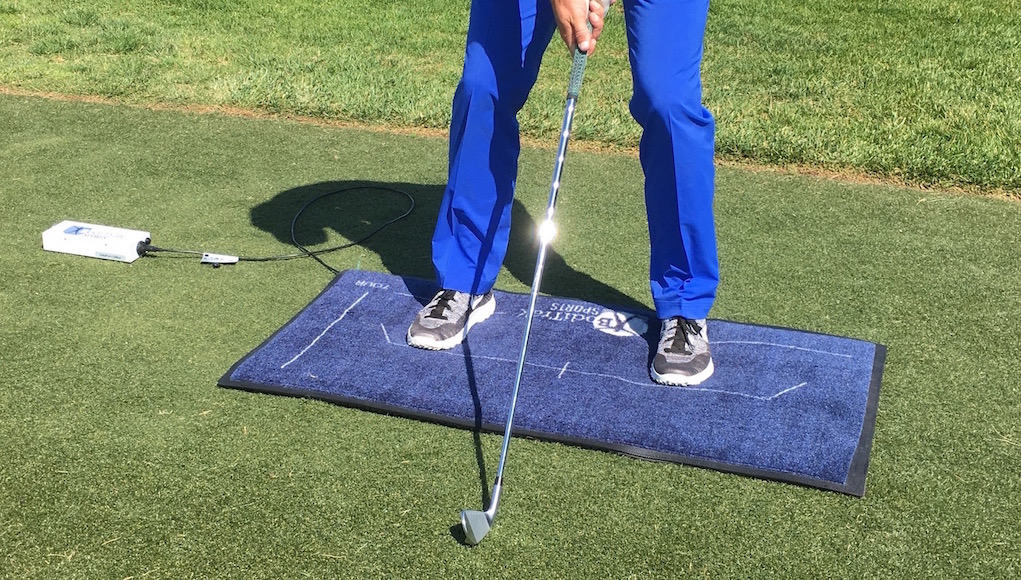
New technology can be intimidating, for both the student as well as the instructor. That might surprise you… an instructor is intimidated, too? As instructors, we need to be able to understand the data that new technology is sharing with us first, and that takes some time. We then need to be able to connect the dots on how new technology affects technique. Finally, we need to be able to communicate the simplest, most efficient way to improve each individual student’s game.
After spending close to a year with a pressure-measuring device called BodiTrak, a mat that records a golfer’s ground forces throughout the swing, I thought you might like to know how I’ve been using it to help my students with their golf games. Below are 9 reasons why I believe golfers should be using pressure-measuring devices — at least every once in while — to improve their golf swings.
1. A Better Setup
It’s amazing how poorly some golfers set up to use the ground efficiently at address. They’ve put themselves in a position where their athlete is already in recovery mode, due to their poor setup.
Here are the characteristics that I like to see.
Students should start with slightly more pressure on their lead foot, maybe 55 percent. They should also start with more pressure (again, about 55 percent) on their lead toe and trail heel. This set-up position starts the domino effect for a solid golf swing.
2. Improved Balance
If you are out of balance during your golf swing, you’re in trouble. Your body has to expend more energy subconsciously to make sure you don’t fall over. That means you’re using less energy completing the task of hitting your golf ball.
Your body is a lot like your computer; the more programs that are open and running, the slower your computer performs. Balance works the same way. If you’re in balance, your body can perform with more efficiency and speed.
3. Quantify Feel
You’ve heard this before; what you feel is not always real. These devices can give you exact measurements for your technique and take the guess work out of the equation. One of my favorite examples is helping my students feel the proper sequence of events of applying pressure to the lead foot.
4. There Are 7 Different Center of Pressure Traces
The seven center of pressure (COP) traces are:
- Scattered
- Linear
- Heel to Toe
- Fish Hook
- Abbreviated
- Power Trace
- Power Z Trace
They all have their own unique qualities. Some are great for power, while some are great for consistency. Some will make your golf game challenging. Being able to apply the proper trace for your game will lead to better golf.
5. The Change of Direction for Our Downswing Starts with the Lower Body
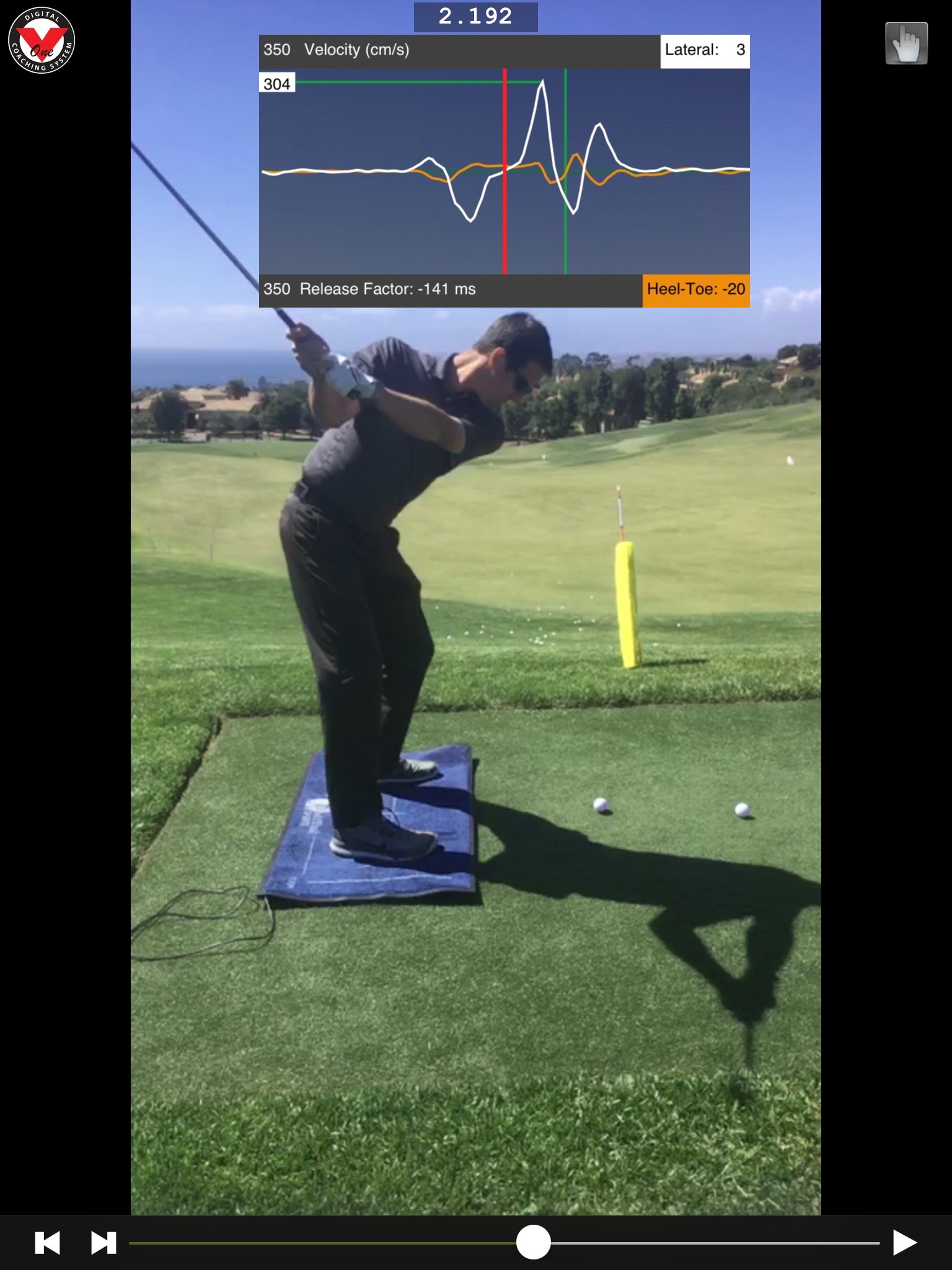
This golfer’s COP is starting to move toward the target just after his left arm is parallel to the ground. Note the white Box labeled “lateral” in the top right corner has a “3,” signifying a motion towards the target.
This change of direction takes place prior to our arms completing the backswing motion. If you want a ballpark figure, the body starts moving toward the target for a full swing somewhere around your trail arm being parallel to the ground during your backswing.
6. There is a Distinct Difference Between a Driver Trace and an Iron Trace
The COP for a driver trace has a small change of direction, back away from the target, prior to impact. Most iron traces do not. This “braking effect” can help golfers swing more up on the ball and maximize their launch conditions with a more ascending strike.
7. Your COP Trace Can Help Change the Shape of Your Shot
Are you trying to execute more of a push path? Try to move your pressure to your lead toe on the downswing. If you are trying to hit a pull path, move your pressure to your lead heal on the downswing.
8. For More Distance, You Need to Increase Your Peak Velocity
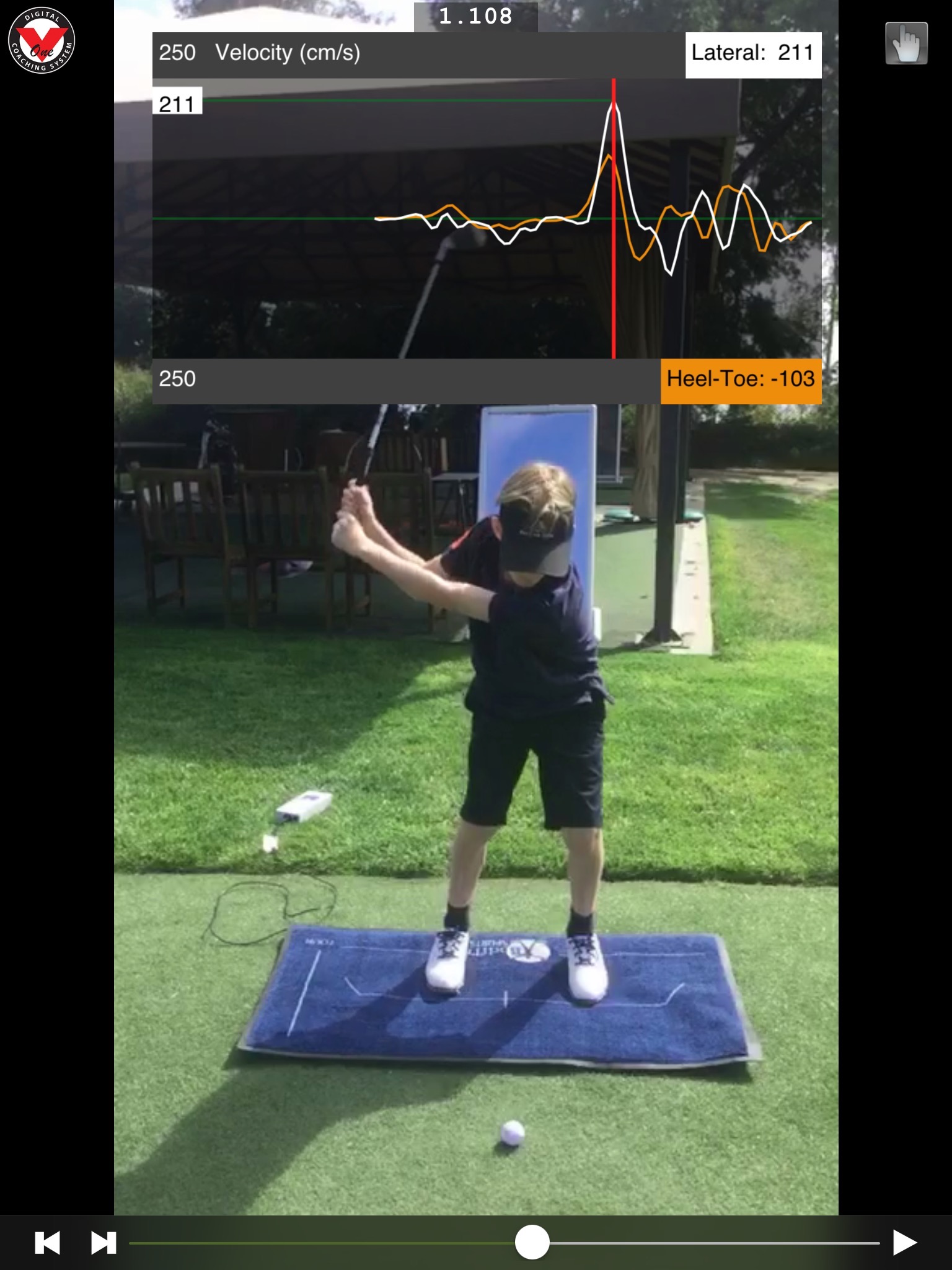
This golfer’s Peak Velocity (Measured @ 211 centimeters/second) has taken place in between the top of the backswing and prior to the lead arm being parallel to the ground.
The Peak Velocity is the fastest lateral motion in your golf swing. Most male touring professionals have their peak velocity taking place prior to their lead arm being parallel to the ground on their downswing.
9. Your Toes and Heels play very different roles in your golf swing
Your toes start and stop the lateral motion of your golf swing. Your heels help your body rotate correctly on both your backswing and downswing. I will tell you right now, if you think you are only an athlete with more pressure on your toes, you’re likely not getting the most out of your golf game! Using your toes and heels with the correct sequence will help you play better golf.
—
Hopefully, one or all of these 9 reasons for using a pressure-measuring device has piqued your interest. These devices are wonderful tools that can help you improve your golf game. Knowledge is power, so increase your knowledge about your foot work and find a more powerful golf game. Good luck!
- LIKE80
- LEGIT6
- WOW5
- LOL4
- IDHT4
- FLOP4
- OB5
- SHANK23
Instruction
The Wedge Guy: The easiest-to-learn golf basic

My golf learning began with this simple fact – if you don’t have a fundamentally sound hold on the golf club, it is practically impossible for your body to execute a fundamentally sound golf swing. I’m still a big believer that the golf swing is much easier to execute if you begin with the proper hold on the club.
As you might imagine, I come into contact with hundreds of golfers of all skill levels. And it is very rare to see a good player with a bad hold on the golf club. There are some exceptions, for sure, but they are very few and very far between, and they typically have beat so many balls with their poor grip that they’ve found a way to work around it.
The reality of biophysics is that the body moves only in certain ways – and the particulars of the way you hold the golf club can totally prevent a sound swing motion that allows the club to release properly through the impact zone. The wonderful thing is that anyone can learn how to put a fundamentally sound hold on the golf club, and you can practice it anywhere your hands are not otherwise engaged, like watching TV or just sitting and relaxing.
Whether you prefer an overlap, interlock or full-finger (not baseball!) grip on the club, the same fundamentals apply. Here are the major grip faults I see most often, in the order of the frequency:
Mis-aligned hands
By this I mean that the palms of the two hands are not parallel to each other. Too many golfers have a weak left hand and strong right, or vice versa. The easiest way to learn how to hold the club with your palms aligned properly is to grip a plain wooden ruler or yardstick. It forces the hands to align properly and shows you how that feels. If you grip and re-grip a yardstick several times, then grip a club, you’ll see that the learning curve is almost immediate.
The position of the grip in the upper/left hand
I also observe many golfers who have the butt of the grip too far into the heel pad of the upper hand (the left hand for right-handed players). It’s amazing how much easier it is to release the club through the ball if even 1/4-1/2″ of the butt is beyond the left heel pad. Try this yourself to see what I mean. Swing the club freely with just your left hand and notice the difference in its release from when you hold it at the end of the grip, versus gripping down even a half inch.
To help you really understand how this works, go to the range and hit shots with your five-iron gripped down a full inch to make the club the same length as your seven-iron. You will probably see an amazing shot shape difference, and likely not see as much distance loss as you would expect.
Too much lower (right) hand on the club
It seems like almost all golfers of 8-10 handicap or higher have the club too far into the palm of the lower hand, because that feels “good” if you are trying to control the path of the clubhead to the ball. But the golf swing is not an effort to hit at the ball – it is a swing of the club. The proper hold on the club has the grip underneath the pad at the base of the fingers. This will likely feel “weak” to you — like you cannot control the club like that. EXACTLY. You should not be trying to control the club with your lower/master hand.
Gripping too tightly
Nearly all golfers hold the club too tightly, which tenses up the forearms and prevents a proper release of the club through impact. In order for the club to move back and through properly, you must feel that the club is controlled by the last three fingers of the upper hand, and the middle two fingers of the lower hand. If you engage your thumbs and forefingers in “holding” the club, the result will almost always be a grip that is too tight. Try this for yourself. Hold the club in your upper hand only, and squeeze firmly with just the last three fingers, with the forefinger and thumb off the club entirely. You have good control, but your forearms are not tense. Then begin to squeeze down with your thumb and forefinger and observe the tensing of the entire forearm. This is the way we are made, so the key to preventing tenseness in the arms is to hold the club very lightly with the “pinchers” — the thumbs and forefingers.
So, those are what I believe are the four fundamentals of a good grip. Anyone can learn them in their home or office very quickly. There is no easier way to improve your ball striking consistency and add distance than giving more attention to the way you hold the golf club.
More from the Wedge Guy
- The Wedge Guy: Golf mastery begins with your wedge game
- The Wedge Guy: Why golf is 20 times harder than brain surgery
- The Wedge Guy: Musings on the golf ball rollback
- LIKE83
- LEGIT13
- WOW5
- LOL1
- IDHT0
- FLOP4
- OB1
- SHANK8
Instruction
Clement: Stop ripping off your swing with this drill!

Not the dreaded headcover under the armpit drill! As if your body is defective and can’t function by itself! Have you seen how incredible the human machine is with all the incredible feats of agility all kinds of athletes are accomplishing? You think your body is so defective (the good Lord is laughing his head off at you) that it needs a headcover tucked under the armpit so you can swing like T-Rex?
- LIKE0
- LEGIT2
- WOW2
- LOL0
- IDHT0
- FLOP0
- OB0
- SHANK2
Instruction
How a towel can fix your golf swing

This is a classic drill that has been used for decades. However, the world of marketed training aids has grown so much during that time that this simple practice has been virtually forgotten. Because why teach people how to play golf using everyday items when you can create and sell a product that reinforces the same thing? Nevertheless, I am here to give you helpful advice without running to the nearest Edwin Watts or adding something to your Amazon cart.
For the “scoring clubs,” having a solid connection between the arms and body during the swing, especially through impact, is paramount to creating long-lasting consistency. And keeping that connection throughout the swing helps rotate the shoulders more to generate more power to help you hit it farther. So, how does this drill work, and what will your game benefit from it? Well, let’s get into it.
Setup
You can use this for basic chip shots up to complete swings. I use this with every club in my bag, up to a 9 or 8-iron. It’s natural to create incrementally more separation between the arms and body as you progress up the set. So doing this with a high iron or a wood is not recommended.
While you set up to hit a ball, simply tuck the towel underneath both armpits. The length of the towel will determine how tight it will be across your chest but don’t make it so loose that it gets in the way of your vision. After both sides are tucked, make some focused swings, keeping both arms firmly connected to the body during the backswing and follow through. (Note: It’s normal to lose connection on your lead arm during your finishing pose.) When you’re ready, put a ball in the way of those swings and get to work.

Get a Better Shoulder Turn
Many of us struggle to have proper shoulder rotation in our golf swing, especially during long layoffs. Making a swing that is all arms and no shoulders is a surefire way to have less control with wedges and less distance with full swings. Notice how I can get in a similar-looking position in both 60° wedge photos. However, one is weak and uncontrollable, while the other is strong and connected. One allows me to use my larger muscles to create my swing, and one doesn’t. The follow-through is another critical point where having a good connection, as well as solid shoulder rotation, is a must. This drill is great for those who tend to have a “chicken wing” form in their lead arm, which happens when it becomes separated from the body through impact.
In full swings, getting your shoulders to rotate in your golf swing is a great way to reinforce proper weight distribution. If your swing is all arms, it’s much harder to get your weight to naturally shift to the inside part of your trail foot in the backswing. Sure, you could make the mistake of “sliding” to get weight on your back foot, but that doesn’t fix the issue. You must turn into your trial leg to generate power. Additionally, look at the difference in separation between my hands and my head in the 8-iron examples. The green picture has more separation and has my hands lower. This will help me lessen my angle of attack and make it easier to hit the inside part of the golf ball, rather than the over-the-top move that the other picture produces.


Stay Better Connected in the Backswing
When you don’t keep everything in your upper body working as one, getting to a good spot at the top of your swing is very hard to do. It would take impeccable timing along with great hand-eye coordination to hit quality shots with any sort of regularity if the arms are working separately from the body.
Notice in the red pictures of both my 60-degree wedge and 8-iron how high my hands are and the fact you can clearly see my shoulder through the gap in my arms. That has happened because the right arm, just above my elbow, has become totally disconnected from my body. That separation causes me to lift my hands as well as lose some of the extension in my left arm. This has been corrected in the green pictures by using this drill to reinforce that connection. It will also make you focus on keeping the lead arm close to your body as well. Because the moment either one loses that relationship, the towel falls.


Conclusion
I have been diligent this year in finding a few drills that target some of the issues that plague my golf game; either by simply forgetting fundamental things or by coming to terms with the faults that have bitten me my whole career. I have found that having a few drills to fall back on to reinforce certain feelings helps me find my game a little easier, and the “towel drill” is most definitely one of them.
- LIKE12
- LEGIT2
- WOW2
- LOL0
- IDHT0
- FLOP2
- OB0
- SHANK8
-

 19th Hole2 weeks ago
19th Hole2 weeks agoJohn Daly stuns fans into silence with brutal opening tee shot on PGA Tour Champions
-

 19th Hole1 week ago
19th Hole1 week agoThings got heated at the Houston Open between Tony Finau and Alejandro Tosti. Here’s why
-

 19th Hole5 days ago
19th Hole5 days agoReport: Tiger Woods has ‘eliminated sex’ in preparation for the 2024 Masters
-

 19th Hole3 weeks ago
19th Hole3 weeks ago2-time major champ announces shock retirement from the sport at age of 33
-

 19th Hole3 weeks ago
19th Hole3 weeks agoEdoardo Molinari reveals the latest PGA Tour golfer to turn down ‘good offer’ from LIV Golf
-

 19th Hole2 weeks ago
19th Hole2 weeks agoCharlie Woods finds it tough going on American Junior Golf Association debut
-

 19th Hole1 week ago
19th Hole1 week agoAddiction, spinal fusion, and scam artists – Everything Anthony Kim revealed in candid interview with David Feherty
-

 19th Hole4 days ago
19th Hole4 days agoAnthony Kim says doctors told him that he ‘may not have much time left’ ahead of LIV return

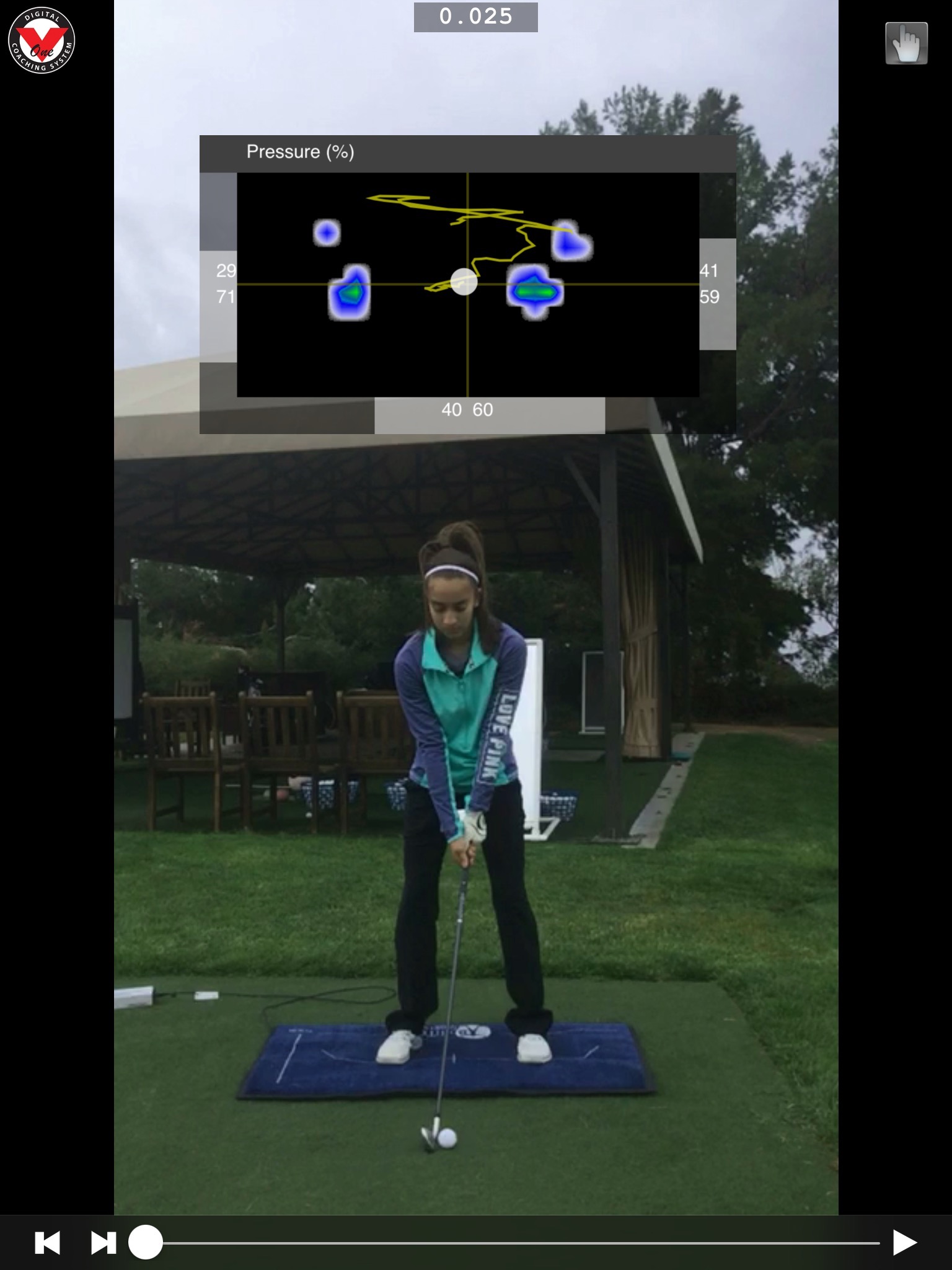
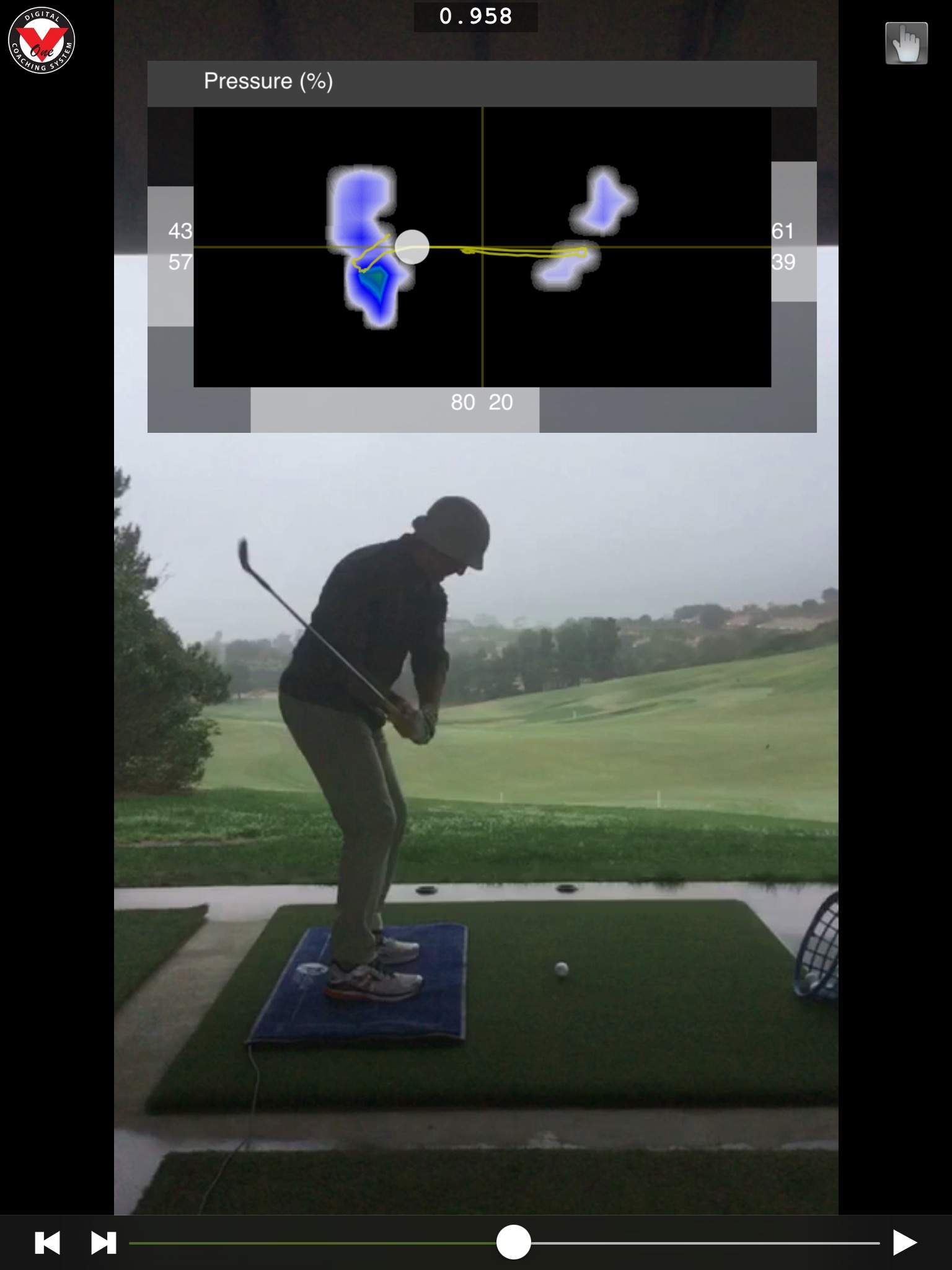
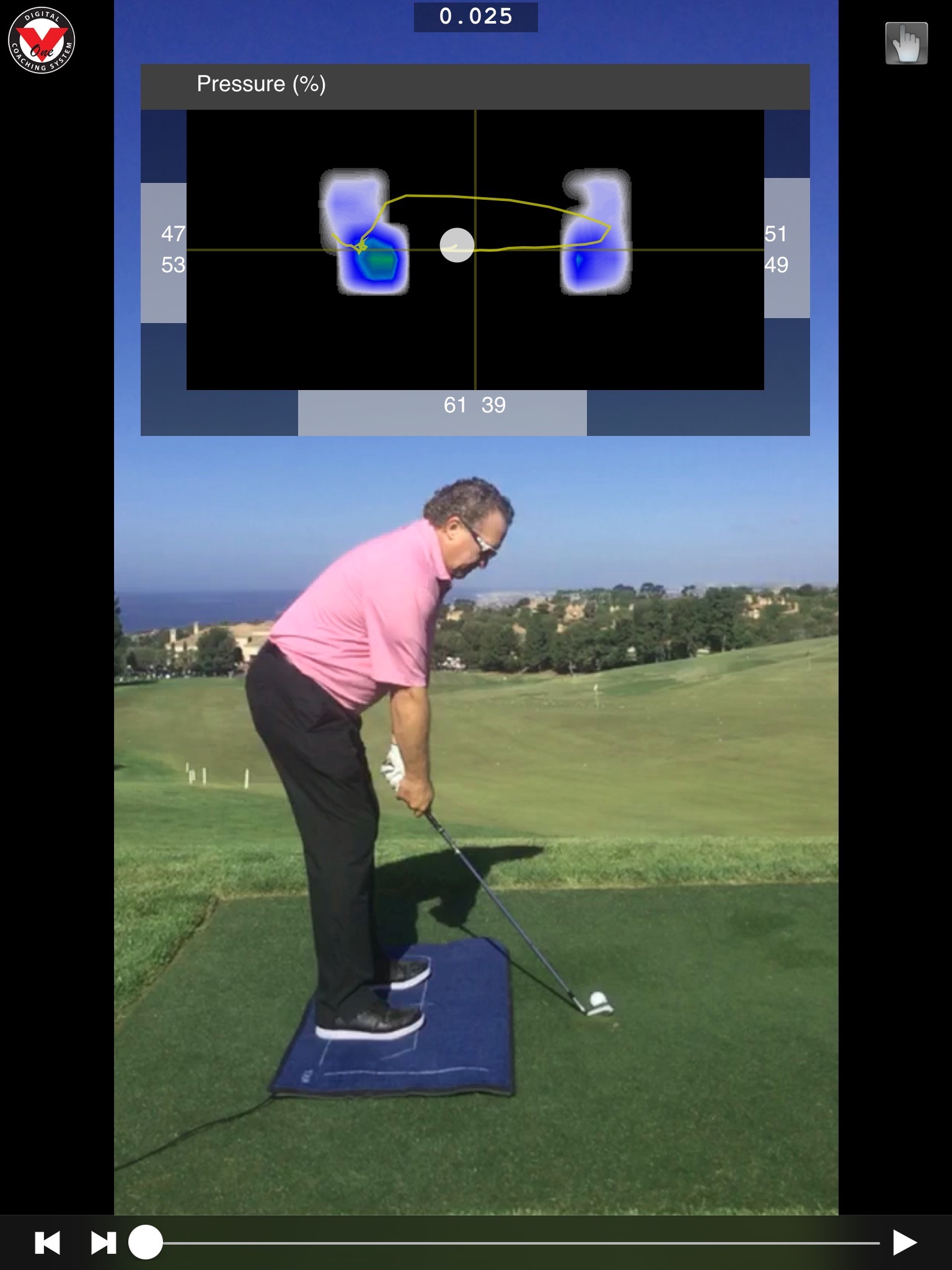
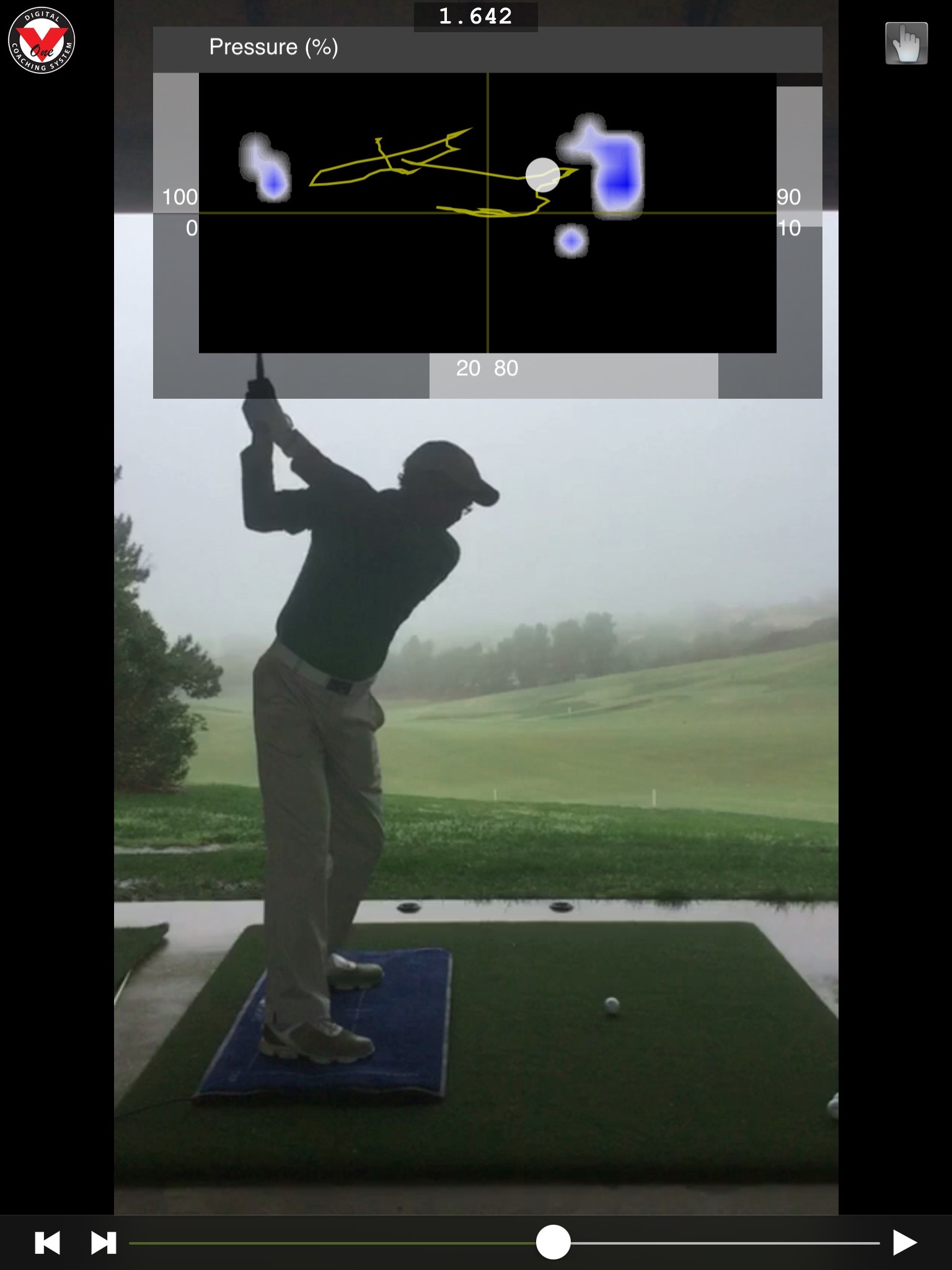










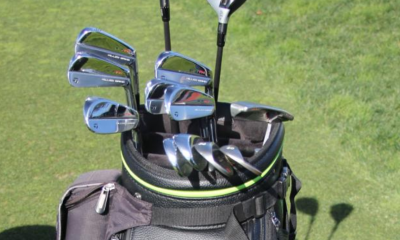

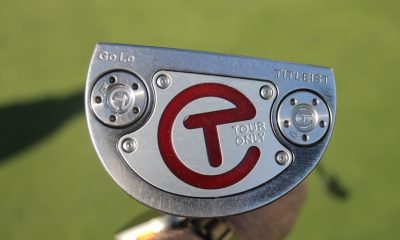

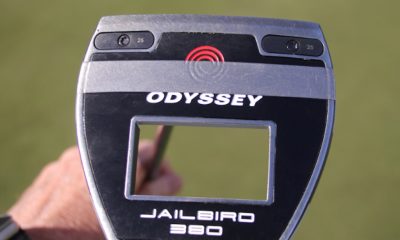

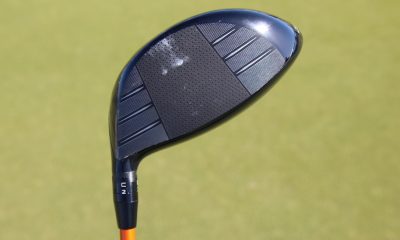

M
Apr 26, 2016 at 1:27 pm
For point #1 about setup – is there any way to work on setup or know if you have a bit too much on the back foot and toward your heels without one of these devices?
I suppose one of those inflatable balance rods would give you some idea at least about heel-toe.
Tim Mitchell
May 2, 2016 at 7:13 pm
M…I have an article in the works that will address this shortly. Sorry to ask for you to wait. Thank for your patience!
nick
Apr 24, 2016 at 7:54 pm
this device doesn’t look like many people would find comfortable to use . i like standing on what I’m hitting, and it looks like it would impact my standard swing . i like to use my feet to feel and initiate my swing
Tim Mitchell
May 2, 2016 at 7:18 pm
It’s pretty stable Nick. I can think of a number of conditions out on the course that are a lot less secure. Bunkers, pine needles, dirt, etc. Plus, it’s not so thick that you feel like the golf ball is significantly lower than your feet. The information it shares, IMO, is worth any nuisance that you might feel.
farmer
Apr 24, 2016 at 1:26 pm
This is kind of like Trackman. All you have to do is find someone who owns one and knows how to correctly interpret the data. Then, all this person has to do is effectively communicate to the student what the data means and how to make whatever changes are necessary. No problem.
NJP
Apr 23, 2016 at 10:48 pm
Number 1 reason….so instructors can charge you more for fancy gadgets without even helping you get the fundamentals right first.
Jay
May 2, 2016 at 1:50 pm
Funny – I always thought proper balance was one of the fundamentals???
Large chris
Apr 23, 2016 at 5:53 pm
I was sceptical about these devices a couple of years ago but I think as the knowledge base improves in terms of ‘what pros do, their pressure traces’, then there increasing value in it. The problem I always had with this is when coaches (ek Kostis) are trying to talk in terms of ‘weight’ and CofG rather than pressure.
Anything that helps get the setup correct is very valuable. Less knowledgeable instructors try to analyse static frames of the swing as if knowing where the CofG is tells you where the foot pressure is, which is meaningless in a dynamic system.